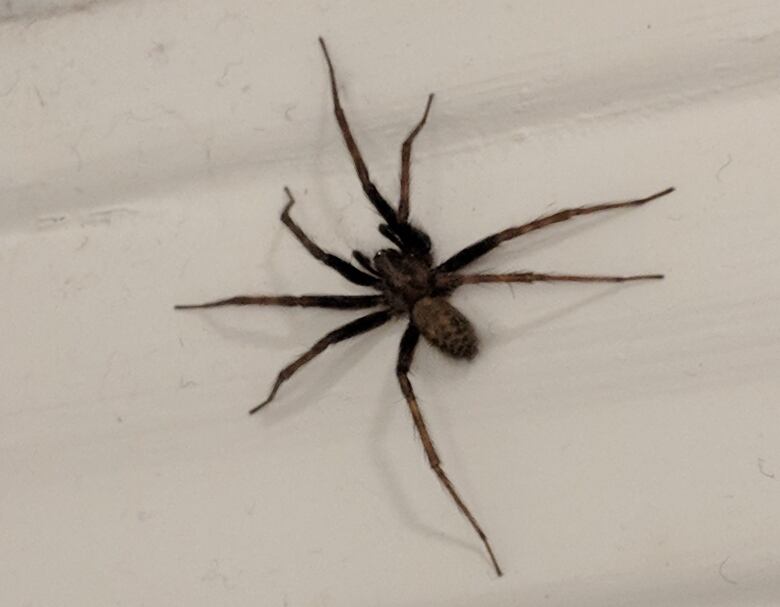Island man keeps finding mysterious spiders in his home
They are a part of our world and they're not something that we're supposed to get rid of

Keith Burgoyne has learned to live with his uninvited guests.
The only thing is that they're not people. They're spiders.
Burgoyne has lived in his Charlottetown home for seven years. Despite keeping a standard, tidy home, he says the spiders just keep showing up.
"At first it was like 'Oh my God, what is this,'" said Burgoyne. "Now it's very run of the mill. If I see one walk in, I know how they behave."
Burgoyne finds the spiders throughout the spring and summer, and not infrequently. He said they vary in size but in the spring, when they're at their smallest, they are still "huge."
"That's small. They get bigger as the year proceeds, but I never find them in a web," he said.
"If I walk toward it, they freeze and I have a cup and I'll just put the cup on them, scoop them up in it and take them outside.
"I feel bad about killing them."
Treating his guests with care
He estimates that he finds a big spider every week or so during the warmer months, and catches and releases about 20 spiders a year.

Burgoyne now has a dedicated cup for catching the spiders. He said they appear to be furry, and the biggest one he found was in his basement.
Its hair appeared to have turned grey and it took him by surprise when he found it under a brick, asits fullsize rivaled the width of the brick.
Despite his investigatory efforts, Burgoyne has never been able to identify his frequent friends.
"I posted the photo of a spider online and everyone just responded with fear and revulsion," he said.
During spring and summer, I catch at least one of these big-ass mofos a week. They're always running across the floor. They're never in a web, though I think I saw one in a web-tunnel once.
My question: what kind of #spider are they, and do y'all get 'em too? #pei pic.twitter.com/yPpY9HQv8H
—@keithburgoyneMeet the barn funnel weaver
Bob Harding, who is on the executive of Nature P.E.I., has a hunch. Although it is difficult to identify spiders without a specimen, he thinksbased on the photos and descriptions Burgoyne's spiders are barn funnel weavers, .
"They make a little funnel ... they don't use it to catch flies. They actually hide in it and they run across the floor and grab things," he said, explaining that's why Burgoyne isn't finding webs in his home.
"This particular kind likes to live in buildings, including our homes and they live very well with us."
We shouldn't curse Noah for putting them on the ark. Bob Harding, Nature P.E.I.
Harding said some barn funnel weavers can survive several years in your home.
"While that may be a little bit freaky, that means they're in a quiet corner somewhere," he said.
"They kind of show up in the summertime or get active in the summertime, but it also means that they're eating something that you probably don't want in your house either."
Smaller than they appear
As for their size? Harding said they likely appear larger than they really are.
"Eleven millimetres, so this is barely a little bit bigger than a centimetre on body length, but it does say that they have really long legs and they are very, very fast," he said.
"When you see a spider that surprises you when it runs across the floor top speed, it always looks bigger."
Burgoyne said they are indeed very fast and have evaded capture by his cat.

Nature P.E.I. has conducted a census of spiders found on the Island and in their research, the barn funnel weavers have turned up in all three counties, further confirming Harding's identification.
This means the spiders aren't unique or isolated to Burgoyne's home, but they seem to have made themselves comfortable there.
"They believe that they're a Eurasian species that probably came with early settlers and they've been here in Canada longer than many people have," said Harding.
"They are a part of our world and they're not something that we're supposed to get rid of.
"We shouldn't curse Noah for putting them on the ark."












_(720p).jpg)


 OFFICIAL HD MUSIC VIDEO.jpg)
.jpg)



























































































